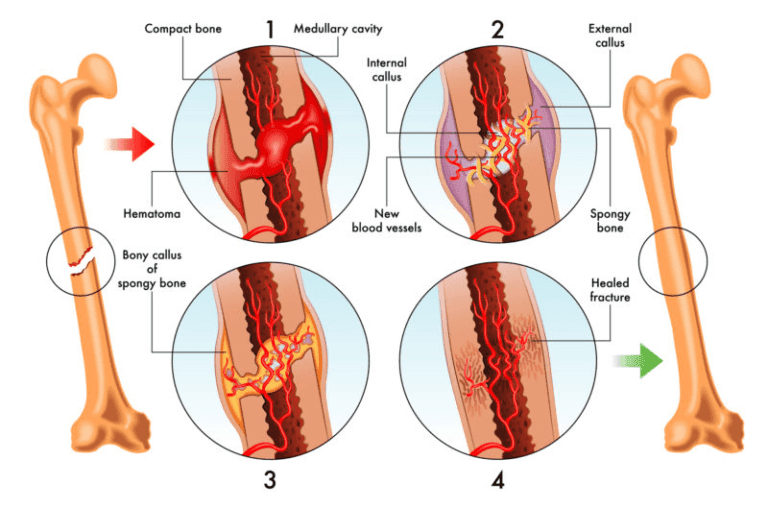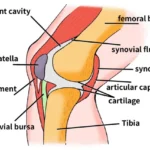A broken bone, also known as a fracture, is a common injury that can occur from various causes such as falls, sports injuries, or accidents. The healing process of a fracture is intricate and involves several stages to restore the bone to its original strength and function. Understanding how broken bones heal can provide valuable insights into the body’s remarkable ability to repair itself.
The Healing Process of a Fracture
Initial Response:
- Formation of a Hematoma: Immediately after a fracture, the body initiates the healing process by forming a hematoma (a blood clot) around the broken bone. This blood clot provides the foundation for new bone growth and stabilises the fracture site.
- Inflammation: The area around the fracture becomes inflamed, which helps to protect the injured area and remove dead cells and debris.
Formation of a Soft Callus:
- Cellular Activity: Within a few days to a week after the fracture, specialized cells called fibroblasts and chondroblasts begin to produce collagen and cartilage, forming a soft callus around the fracture site. This soft callus bridges the gap between the broken bone ends.
- Temporary Stabilisation: The soft callus acts as a temporary stabiliser, allowing the bones to remain in the correct position while further healing occurs.
Formation of a Hard Callus:
- Ossification: Over the next few weeks, the soft callus is gradually replaced by a hard callus. Osteoblasts (bone-forming cells) begin to produce new bone material, converting the soft callus into a hard, bony callus. This process is known as ossification or bone mineralization.
- Bone Bridging: The hard callus bridges the fracture line, providing more stability and strength to the healing bone.
Bone Remodelling:
- Resorption and Replacement: The final phase of bone healing involves bone remodelling, which can take several months to years. During this phase, the hard callus is gradually reshaped and replaced by mature bone. Osteoclasts (bone-resorbing cells) remove excess bone tissue, while osteoblasts continue to form new bone.
- Restoration of Bone Structure: Remodelling ensures that the bone regains its original shape, strength, and function. The newly formed bone is refined and integrated with the surrounding bone tissue, making the fracture site as strong as it was before the injury.
Factors Influencing Bone Healing
Several factors can influence the speed and success of bone healing:
- Age: Younger individuals typically heal faster than older adults.
- Nutrition: Adequate intake of calcium, vitamin D, and protein is essential for bone healing.
- Overall Health: Conditions such as diabetes or osteoporosis can affect the healing process.
- Stability of the Fracture: Proper alignment and immobilisation of the fracture are crucial for effective healing.
- Smoking and Alcohol Consumption: Both can impede bone healing and should be avoided during the recovery process.
Supporting Bone Healing
To support the bone healing process, it is important to follow medical advice, maintain a healthy diet, and avoid activities that could disrupt the healing fracture. Physical therapy may also be recommended to restore strength and mobility once the bone has sufficiently healed.
Conclusion
Bone healing is a complex yet fascinating process that showcases the body’s natural ability to repair itself. By understanding the stages of bone healing and the factors that influence it, individuals can take proactive steps to support their recovery and ensure a successful return to normal activities. If you have experienced a fracture, it is essential to seek medical attention and follow your healthcare provider’s recommendations to promote optimal healing.





